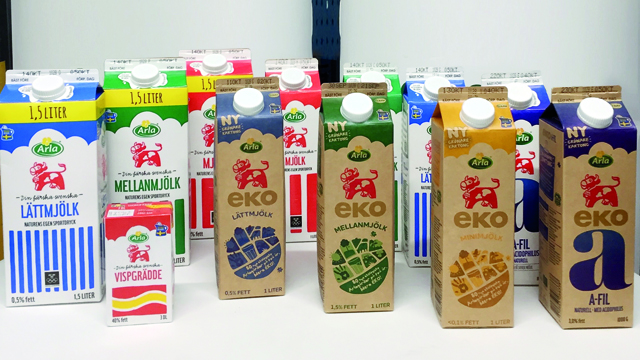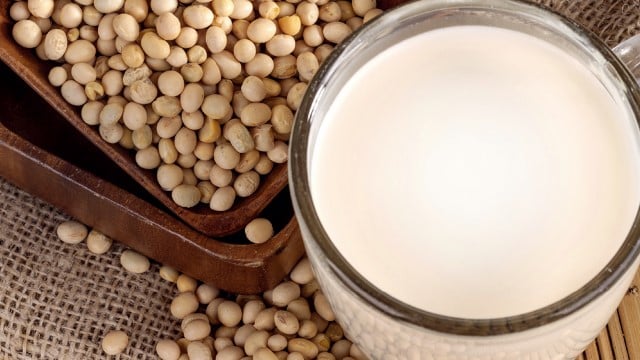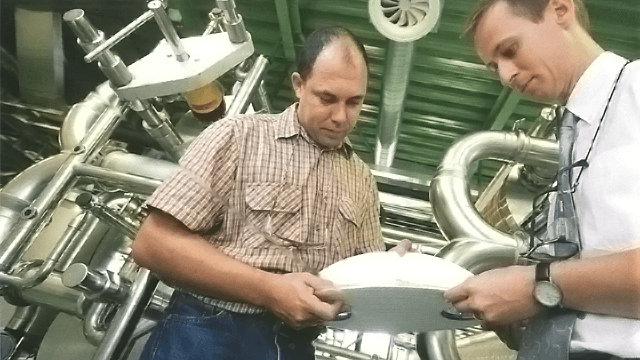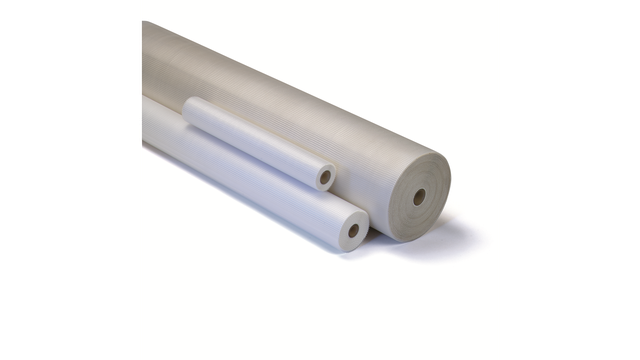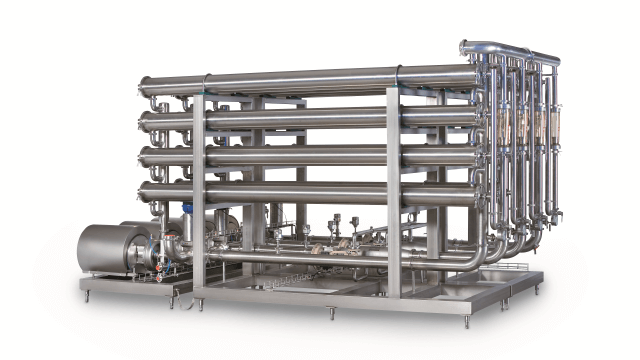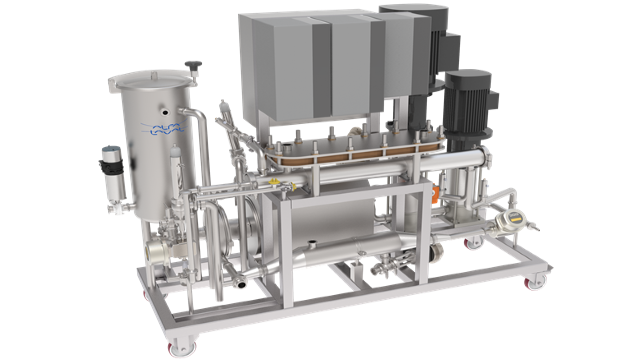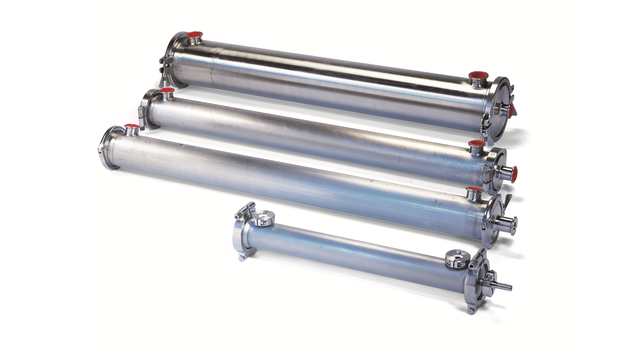Membrana spiralna UF
Membrany spiralne Alfa Laval do ultrafiltracji (UF) są sprawdzonym i popularnym wyborem w wielu procesach w przemyśle spożywczym, napojów, mleczarskim, biotechnologicznym i farmaceutycznym, gdzie są wykorzystywane do odzyskiwania produktów, a także ich oczyszczania, frakcjonowania i zagęszczania. To sprawia, że membrany filtracyjne są jednym z naszych najbardziej wszechstronnych produktów. Alfa Laval oferuje szeroką linię membran UF o różnych charakterystykach i właściwościach.
Zwiększ wydajność instalacji w procesie membranowym UF
- Opłacalne działanie dzięki niskiemu zużyciu energii
- Wydajność - brak konieczności wymiany/utylizacji wkładów lub materiałów eksploatacyjnych stosowanych w tradycyjnej filtracji typu dead-end
- Doskonała stabilność chemiczna i termiczna z okresem serwisu do kilku lat
- Niskie koszty rozruchu i elastyczność - dostępne w różnych kombinacjach długości, średnicy i rozmiaru przekładki
- Jakość, niezawodność i trwałość dzięki globalnej sieci obecności i rozległemu doświadczeniu w procesach mleczarskich
Doświadczenie Alfa Laval w technologii membranowej sięga aż do wynalezienia samej technologii membranowej (ponad 50 lat). Membrany UF, które są produkowane we własnym zakresie w naszym specjalnym zakładzie, są oparte na unikalnej konstrukcji z polipropylenu lub poliestru w pełni dopasowanej konstrukcji sanitarnej, która zapewnia optymalne warunki czyszczenia. Niezwykle trwałe, membrany te charakteryzują się doskonałą stabilnością chemiczną i termiczną oraz żywotnością sięgającą kilku lat. Posiadamy zarówno membrany płaskie (do przesiewania lub pracy laboratoryjnej), jak i spiralne (do większych zastosowań), co jest zaletą przy zwiększaniu skali.
Nasze membrany ultrafiltracyjne są zgodne ze wszystkimi ważnymi przepisami.
Wraz z dodaniem nowych elementów membrany spiralnej UF DuroLac™, oferujemy teraz do 15% wzrost wydajności permeatu na element, znacznie zwiększając wydajność instalacji.
Optimize dairy plants with DuroLac™ UF Spiral Membrane Elements
Celem zakładu mleczarskiego jest ciągłe zwiększanie wydajności i wydajności przy jednoczesnej ochronie lub poprawie wydajności zakładu. Uznajemy te priorytety i opracowaliśmy nową linię spiralnych elementów membranowych, a mianowicie spiralne elementy membranowe DuroLac™ UF.
- Zwiększ efektywność i wydajność: Osiągnij do 15% wzrost wydajności permeatu na element, zwiększając ogólną efektywność i wydajność instalacji.
- Zmniejszenie zużycia energii: Niższe zużycie energii podczas produkcji i czyszczenia, przyczyniające się do bardziej zrównoważonego działania.
- Niższe zużycie mediów: Zmniejszenie zużycia wody i chemikaliów CIP, zwiększające zrównoważony rozwój i opłacalność.
Alfa Laval oferuje różne typy membran ultrafiltracyjnych
Membrany ultrafiltracyjne mają zakres od 1.000-100.000 masy cząsteczkowej odciętej (MWCO), a stosowane ciśnienie jest stosunkowo niskie. Sole, cukry, kwasy organiczne i mniejsze peptydy przechodzą przez pory, podczas gdy białka, tłuszcze i polisacharydy są zatrzymywane.
Nasze spiralne membrany ultrafiltracyjne umożliwiają frakcjonowanie strumienia zasilającego na dwa odrębne strumienie, z których każdy zawiera rozpuszczone składniki o różnej masie cząsteczkowej.
Seria UF-pHt
Membrany UF-pHt™ tolerują wysokie temperatury i wartości pH. Membrany wykonane są z polisulfonu lub polieterosulfonu na polipropylenowym materiale nośnym. Wartości MWCO mieszczą się w zakresie od 2 000 do 100 000 Daltonów. Większość membran spiralnych jest zatwierdzona przez USDA i posiada certyfikat Halal.
Seria UF-PP
Seria UF-PET
Membrany spiralne UF-PET oparte są na poliestrowym materiale nośnym. Membrana polimerowa wykonana jest z polisulfonu, polieterosulfonu lub regenerowanego octanu celulozy o wartości MWCO do 100 000. Niektóre typy są zatwierdzone przez USDA, a na życzenie możemy zaoferować produkty z certyfikatem Halal.
Seria dla przemysłu mleczarskiego
Alfa Laval posiada dwie serie membran spiralnych dostosowanych do zastosowań w przemyśle mleczarskim: Dairy UF-PET i Dairy UF-pHt™.
Membrany spiralne UF-PET dla przemysłu mleczarskiego, które są produkowane z poliestrowego materiału nośnego, są dostępne z wartościami MWCO od 5.000 do 10.000 Daltonów.
Membrany spiralne UF-pHt™ dla przemysłu mleczarskiego, które są odlewane na polipropylenowym papierze nośnym, są dostępne z wartościami MWCO od 5 000 do 20 000 Daltonów.
Oba typy są zatwierdzone przez USDA, a na życzenie możemy zaoferować produkty z certyfikatem Halal.
Nasze spiralnie zwijane membrany są zgodne ze wszystkimi najważniejszymi przepisami
Wszystkie materiały membranowe stosowane zarówno w konfiguracjach membran płaskich, jak i spiralnie zwijanych są zgodne z rozporządzeniem UE (WE) 1935/2004, rozporządzeniem UE 10/2011, rozporządzeniem UE (WE) 2023/2006 oraz przepisami FDA (CFR) Tytuł 21 i nadają się do stosowania w przemyśle spożywczym i farmaceutycznym. Zgodność obejmuje również powiązany sprzęt i osprzęt, w tym elementy takie jak jednostki płytowo-ramowe, obudowy elementów i pompy, wspierając bezpieczną i wydajną filtrację membranami spiralnymi w wielu gałęziach przemysłu.
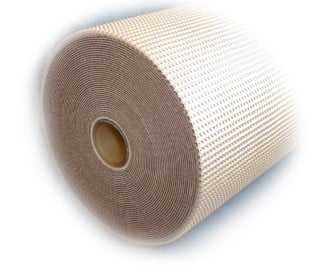
Zasada działania
Podstawowa technologia filtracji membranowej polega na wykorzystaniu półprzepuszczalnej membrany do rozdzielenia cieczy na dwa odrębne strumienie.
Pompowanie tej cieczy po powierzchni membrany wytwarza dodatnie ciśnienie trans-membranowe, które umożliwia przejście wszelkich składników mniejszych niż porowatość membrany, tworząc permeat.
Wszelkie składniki większe niż rozmiar porów po prostu nie mogą przejść i pozostają w tak zwanym retentacie. Powierzchnia spiralnie zwiniętej membrany jest wolna od zatorów dzięki sile przepływu cieczy poruszającej się równolegle do powierzchni membrany.
Wydajna filtracja za pomocą membrany spiralnej
Membrana spiralna składa się z kilku „kopert” membranowych z dwoma arkuszami membranowymi oddzielonymi siatką dystansową permeatu, z których każda jest przyklejona do centralnej rurki zbierającej permeat.
Pomiędzy każdą parą kopert znajduje się przekładka, która tworzy kanał zasilający, umożliwiając przepływ paszy na całej długości spiralnie zwiniętej membrany, podczas gdy permeat przechodzący przez membranę do koperty membrany przepływa spiralnie do rurki zbierającej permeat.
Czerwony = zasilanie/retentat.
Zielony = permeat.
Schemat przepływu w membranie spiralnej UF, gdzie kolor czerwony reprezentuje zasilanie/retentat, a żółty permeat.


